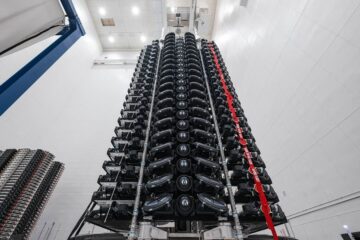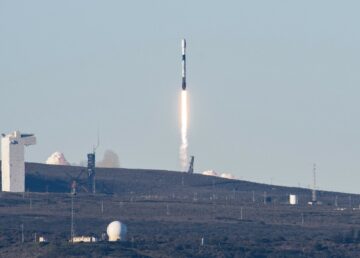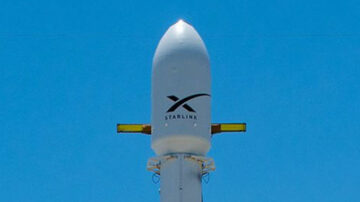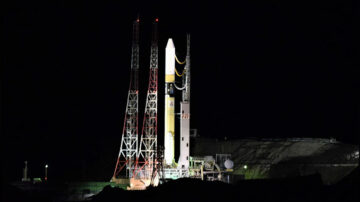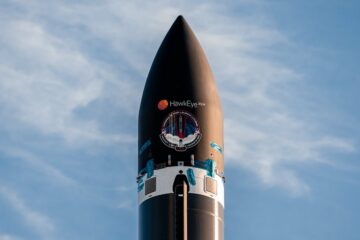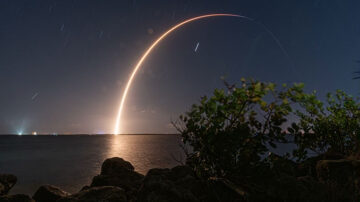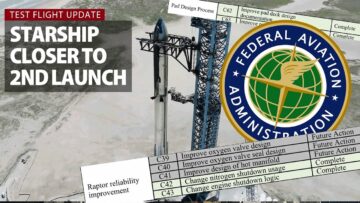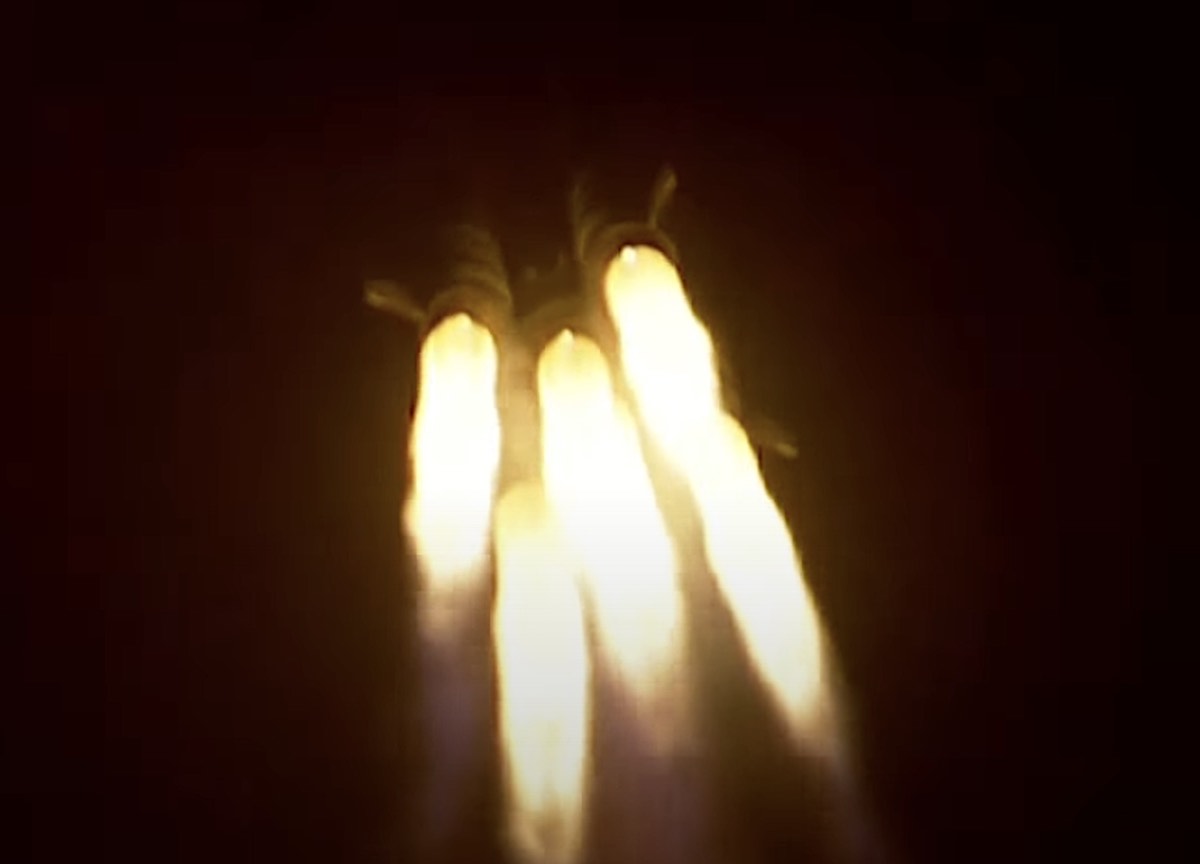
China’s space station is set to receive delivery of fresh supplies, experiments, and fuel after the launch of the Tianzhou 6 cargo ship at 9:22 a.m. EDT (1322 UTC) Wednesday aboard a Long March 7 rocket.
The unpiloted supply freighter is expected to automatically dock with China’s Tiangong space station later Wednesday. Three Chinese astronauts aboard the orbiting outpost will open hatches and begin unpacking equipment, while internal valves open to flow propellants from the cargo ship into storage tanks on the station’s Tianhe core module.
The Tianzhou 6 spacecraft debuts an upgraded internal design, with 20% more payload capacity to carry up to 7.4 metric tons (16,300 pounds) of cargo. The cargo ship also carries about 1,750 kilograms (3,858 pounds) of propellant to support the space station, about 700 kilograms (1,543 pounds) of which will refill tanks on the Tiangong space station.
The modifications to Tianzhou 6 are primarily inside the spacecraft to improve the packing efficiency of the pressurized cargo module. The spacecraft weighed nearly 30,000 pounds (about 13.5 metric tons) at launch, the same as previous Tianzhou missions.
The resupply mission lifted off on a 174-foot-tall (53-meter) Long March 7 rocket from the Wenchang launch base on Hainan Island, China’s newest and southernmost spaceport. The exact liftoff time of 9:22:51 a.m. EDT (1322:51 UTC) was set to coincide with the moment Earth’s rotation carried the launch pad under the flight path of the Tiangong space station, enabling a quick rendezvous and docking.
China’s Tianzhou 6 resupply ship lifted off aboard a Long March 7 rocket from Hainan Island at 9:22am EDT (1322 UTC) in pursuit of the Tiangong space station. https://t.co/mDC54hmwOZ pic.twitter.com/PN3BQLzTP8
— Spaceflight Now (@SpaceflightNow) May 10, 2023
The Tiangong space station, with its three-person crew, orbits more than 230 miles (370 kilometers) above Earth at an inclination of 41.5 degrees to the equator. Tianzhou 6 is the sixth flight of China’s resupply ship, which is similar in purpose to the SpaceX Dragon, Northrop Grumman Cygnus, and Russian Progress cargo ships that regularly deliver equipment to the International Space Station.
It’s the fifth Tianzhou mission to the Tiangong space station, following a test flight to China’s now-decommissioned Tiangong 2 space lab, a testbed used before construction of the larger Tiangong complex. Tianzhou means “heavenly ship” in English.
The Long March 7 rocket ignited six booster engines to climb off the launch pad at Wenchang with 1.6 million pounds of thrust. An on-board guidance computer commanded the rocket to head southeast over the South China Sea, lining up with the Tiangong space station’s orbit.
The Long March 7 is a two-stage rocket augmented with four strap-on boosters. The rocket consumed 45,000 gallons, or 170 cubic meters, of kerosene fuel in combination with cryogenic liquid oxygen during the 10-minute ascent into orbit.

After separating from the Long March 7’s second stage, the Tianzhou 6 spacecraft deployed solar arrays and started firing thrusters to fine-tune its approach for docking at the Tiangong space station.
Clothing and food, including fresh fruit, for the Tiangong space station crew are packed aboard the Tianzhou 6 spacecraft. The mission will deliver equipment to support 29 scientific experiments, according to China’s Manned Space Agency.
The Tianzhou 6 mission is the first resupply flight to the space station since China completed assembly of the Tiangong outpost. With construction complete, the Tiangong station needs less propellant for in-orbit maneuvers, so Chinese space officials shifted the cargo load for Tianzhou 6 from an emphasis on propellant to a focus on dry goods.
The fuel on Tianzhou 6 to be transferred inside the space station include xenon gas for the Tiangong lab’s electric propulsion system.
At the end of the Tianzhou 6 mission, Chinese astronauts will pack trash into the cargo spacecraft for disposal during a fiery re-entry back into the atmosphere. While docked to the Tiangong station, Tianzhou cargo ships can provide propulsion to change the orbit of the complex.
Launch of the space station’s next three-person crew is scheduled later this month on China’s Shenzhou 16 mission, followed soon after by the return to Earth of the Shenzhou 15 crew, which has been living and working on the Tiangong complex since November.
Email the author.
Follow Stephen Clark on Twitter: @StephenClark1.
- SEO Powered Content & PR Distribution. Get Amplified Today.
- PlatoAiStream. Web3 Data Intelligence. Knowledge Amplified. Access Here.
- Minting the Future w Adryenn Ashley. Access Here.
- Buy and Sell Shares in PRE-IPO Companies with PREIPO®. Access Here.
- Source: https://spaceflightnow.com/2023/05/10/long-march-7-tianzhou-6-launch/
- :has
- :is
- $UP
- 000
- 1
- 10
- 13
- 15%
- 22
- 30
- 7
- 9
- a
- About
- above
- According
- After
- agency
- also
- an
- and
- approach
- ARE
- AS
- Assembly
- At
- Atmosphere
- augmented
- author
- automatically
- back
- base
- BE
- been
- before
- begin
- booster
- BOOSTERS
- by
- CAN
- Capacity
- Cargo
- carry
- change
- China
- Chinas
- chinese
- climb
- COM
- combination
- complete
- Completed
- complex
- computer
- concept
- construction
- consumed
- Core
- credit
- cryogenic
- Debuts
- deliver
- delivery
- deployed
- Design
- Dock
- Dragon
- dry
- during
- earth
- efficiency
- Electric
- emphasis
- enabling
- end
- Engineering
- Engines
- English
- equipment
- expected
- experiments
- firing
- First
- flight
- flow
- Focus
- followed
- following
- food
- For
- four
- fresh
- from
- Fuel
- full
- GAS
- generated
- goods
- guidance
- hatches
- head
- http
- HTTPS
- improve
- in
- include
- Including
- internal
- International
- international space station
- into
- island
- ITS
- jpg
- lab
- larger
- later
- launch
- launches
- less
- Lifted
- Liquid
- living
- load
- Long
- March
- max-width
- means
- metric
- million
- Mission
- missions
- Modifications
- module
- moment
- Month
- more
- nearly
- needs
- Newest
- next
- November
- now
- of
- off
- officials
- on
- open
- or
- Orbit
- orbiting
- over
- Oxygen
- Pack
- packed
- pad
- path
- plato
- Plato Data Intelligence
- PlatoData
- pounds
- power
- previous
- primarily
- Progress
- propulsion
- provide
- purpose
- Quick
- receive
- regularly
- return
- rocket
- russian
- same
- scheduled
- SEA
- Second
- separating
- set
- shifted
- ships
- similar
- since
- SIX
- sixth
- So
- solar
- Soon
- South
- Space
- space station
- spacecraft
- spaceflight
- Spaceport
- SpaceX
- Stage
- started
- station
- Stephen
- storage
- supply
- support
- system
- Tanks
- test
- than
- that
- The
- this
- three
- time
- to
- tons
- transferred
- under
- Unpacking
- upgraded
- used
- UTC
- valves
- was
- Wednesday
- which
- while
- will
- with
- working
- zephyrnet

